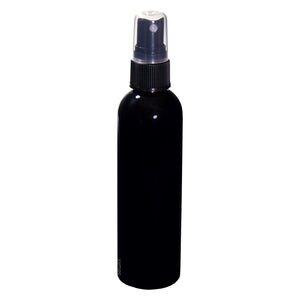
NOW in Rollerball or Spray Bottle unscented or enhanced with organic essential oils.
*
To use MagnEASYum rollerballs or sprays for headaches of any kind, simply roll or spray on your shoulders, neck, across your forehead, scalp, and upper back.
To help with other aches and pains, roll directly on the painful area.
NEW – 2 ounce SPRAY BOTTLE – Best for larger areas of body aches and pain. Many prefer the rollerball for headache pain application.
Unscented – Ingredients: Magnesium Chloride Salts, Distilled Water, Organic Apricot Kernel Oil – $15


10ml Rollerball – Unscented – Ingredients: Magnesium Chloride Salts, Distilled Water, Organic Grapeseed Oil $12.00

10ml Rollerball – Soft and Sleepy with Organic Lavender and Rose Essential Oils, Magnesium Chloride Salts, Distilled Water, Organic Grapeseed Oil $15.00

10ml Rollerball – Bright and Zesty with Organic Eucalyptus, Lemon, & Geranium Essential Oils, Magnesium Chloride Salts, Distilled Water $15.00

10ml Rollerball – Immune Boost with Organic Clove, Lemon, Cinnamon, Eucalyptus, & Rosemary Essential Oils, Magnesium Chloride Salts, Distilled Water, Organic Grapeseed Oil $15.00

10ml Rollerball – Feelin’ No Pain with Organic Peppermint, Frankincense, Lavender, & Sweet Orange Essential Oils, Magnesium Chloride Salts, Distilled Water, Organic Grapeseed Oil $15.00

10ml Rollerball – Frank&Myrrh for Pain with Organic Frankincense, Myrrh Essential Oils, Magnesium Chloride Salts, Distilled Water, Organic Grapeseed Oil $15.00

“Okay – so this is like a miracle. My head and neck aches are gone! Whenever I feel a twinge, I just roll on the sore spot or my head and neck and GONE! This is a life saver for me.” Julian W.
“Who knew that this would work so well. Pain dissipates quickly.” Ralph J.
“I work near cell towers and feel the pain in my head and body. I keep a bottle of this on my desk and my co-workers try to steal it!” Jeffery B.
Unfortunately, over half of all people in the United States are not getting enough magnesium each day. You might not immediately notice it if you are deficient in magnesium, but once the deficiency becomes too big, it can be quite problematic. Look out for these warning signs of magnesium deficiency so you can stop it before it becomes too severe.
*
Did you know that magnesium is actually better absorbed through the skin than the stomach? While taking a magnesium supplement may seem like the obvious way to increase your magnesium intake, applying magnesium oil to the skin may be more effective at raising overall levels of magnesium in the body especially if you have digestive issues. The reason is that magnesium is often not well absorbed by the digestive system. Magnesium is even more difficult to absorb if you are also low in vitamin D, lack gut bacteria, or suffer from another condition. Topical magnesium application does not cause the gastrointestinal issues of high dose oral supplements because your body will only absorb what it can use. Transdermal magnesium application is one of the safest, most effective ways to increase magnesium levels.
Some warning signs of magnesium deficiency
1. Headaches
Constant headaches without any health condition may be a sign of magnesium deficiency. Headaches associated with low magnesium levels are often throbbing headaches that cause a sensitivity to light and sound.
2. Muscle Cramps
Without magnesium to build new muscle fiber and regulate muscle movement, you may encounter sudden, painful muscle spasms.
3. Weakened Bones
Not only does magnesium help to build bones, but it is also needed to properly absorb calcium, the mineral that is used to build bones. People with a magnesium deficiency often have osteoporosis, which causes bones to break easily under pressure.
4. Unbalanced Blood Sugar
A study that examined over 2,000 patients found that a lack of magnesium caused high blood sugar levels and increased the risk of developing type 2 diabetes.
5. High Blood Pressure
A study that involved 8,500 women found that high magnesium was associated with lower blood pressure. Magnesium deficiencies might cause high blood pressure by affecting the formation of blood vessels.
6. Insomnia
Magnesium helps to relax muscles and boost serotonin levels, so it can be used as a sleep aid. Without magnesium, the anxiety and muscle pains associated with magnesium deficiencies can keep you up all night long.
7. Depression and Anxiety
Without magnesium, the body does not have enough serotonin, which is a calming and relaxing hormone, so depression and anxiety are more likely to occur. Studies found that many people with depression immediately begin to recover after they improved magnesium intake.
8. Muscle Pain
Muscle pain that feels tingling or sharp can be a symptom of magnesium deficiency, and one illness that is particularly affected by magnesium deficiencies is fibromyalgia, which causes widespread skeletomuscular pain. See Mayo Clinic study below.
More on Migraines and Other Headaches
Recent studies have also linked recurring migraine headaches to magnesium deficiency. In one study, 81 chronic migraine sufferers were treated with 300 mg of magnesium 2 times a day. The results were that the frequency of their migraines was reduced by 41.6% while a control group who were given placebos had a reduction of only 15.8 %. The study also found that the number of days and the pain of the migraines significantly reduced.
People who suffered from migraines as well as many other types of headache were magnesium deficient and treating the deficiency alleviated headache pain. The study involved treating a group of 3,000 patients with 200 mg of magnesium daily. The results found that the patients experienced an 80% reduction in their migraine symptoms.
When magnesium is low, it is unable to do its job to counteract the clotting action calcium exerts on the blood. Micro blood clots are thought to clog up the brain’s tiny blood vessels, leading to migraines. Several other substances that help create blood clots are increased when magnesium is too low.
The most recent study on the transdermal absorption of magnesium is supplied by the renowned Mayo Clinic in Rochester (USA). Here it was investigated, whether magnesium applied transdermally in the form of magnesium oil works for fibromyalgia. 40 women with the clinically determined diagnosis “Fibromyalgia” took part in the study. With the help of a special fibromyalgia questionnaire, the type and manifestation of the complaints were documented on a scale. The data were recorded at the beginning, after 2 weeks and 4 weeks treatment time. Every participant was asked to spray and massage in 4 spray strokes twice a day on the arms and legs for 4 weeks. 24 participants completed the study. For all participants, all complaints improved significantly. (4)
(1) Shealy C.N.: Transdermal Absorption of Magnesium. Southern Medical Association 2005, S.18
(2) Watkins K, Josling PD.: A pilot study to determine the impact of transdermal magnesium treatment on serum levels and whole body CaMg ratios. The Nutrition Practitioner, Spring 2010
(3) Waring RH: Report on Absorption of magnesium sulfate across the skin. School of Biosciences, University of Birmingham. B15 2TT, U.K.
(4) Engen D.J, McAllister S.J., Whipple M.O., Cha S.S., Dion L-J., Vincent A., Bauer B.A., Wahner-Roedler D.L.: Effects of transdermal magnesium chloride on quality of life for patients with fibromyalgia: a feasibility study, 2015, Journal of Integrative Medicine Editorial Office.
When NOT to Use
- If you have low blood pressure
- If you have very sensitive skin – the salts in the magnesium can cause stinging
- Use with caution if you are taking any SSRI’s such as Prozac or Pristiq
- If you are currently taking prescription calcium channel blockers/antagonists
- If you have kidney failure and limited kidney function
- If your doctor has told you not to take magnesium
- All prescription medications should be checked to ensure that there is no adverse reaction when taken with magnesium.
Note: It may sting/irritate your skin a bit so you can keep a wet washcloth nearby to wipe it away after 15-20 minutes, as by this time most of the magnesium will be absorbed. The stinging is said to vary according to how deficient you are: people with high deficiencies have it sting worse so use the magnesium oil on less sensitive areas first.
All information contained within this site is for reference purposes only and is not intended to substitute for the advice given by a pharmacist, physician, or any other licensed health-care professional. Our products have not been evaluated by the FDA and are not intended to diagnose, treat, cure, or prevent any health condition or disease. Please do your own due diligence based on your current health status.
Tag:
Categories: Solutions



